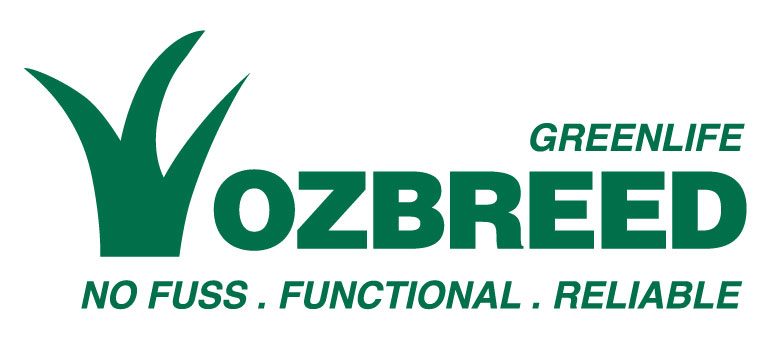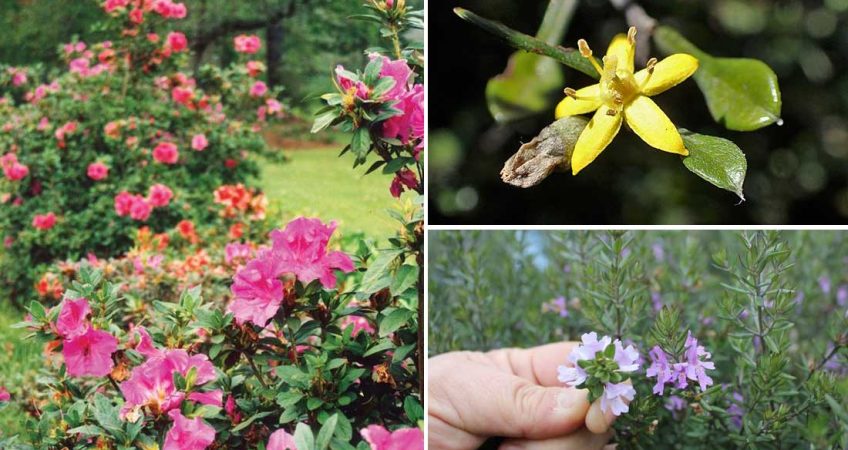Are you seeking flowering hedges that not only enhance the beauty of your garden but also support biodiversity? New Zealand is home to a plethora of flowering hedge plants, each uniquely suited to diverse climates and soil types.
- The westringia is probably one of the best hedging plants brought to NZ from Australia. This is Blue Gem™ Westringia hybrid ‘WES03’ PVR. http://ozbreed.co.nz/plant-ranges/shrubs-and-ground-covers/blue-gem-westringia/
Choosing the Right Flowering Hedge Plants
Selecting the right plants can significantly impact the overall aesthetic and health of your garden. It’s not just about choosing the ones with the most striking flowers; factors such as climate compatibility, soil type, required maintenance level, and personal preferences play a crucial role.
Some flowering plants need full sun and well drained soil to put on a show, while others prefer the opposite. Some plants are less fussy, and can handle a variety of settings. These are the types of plants we focus on breeding at Ozbreed.
Popular Flowering Hedge Plants in NZ
New Zealand gardens host a myriad of popular flowering hedge plants. Each one, with their unique characteristics, adds a touch of charm to your green space.
Corokia cotoneaster
Corokia cotoneaster, commonly known as wire-netting bush, is a popularNew Zealand native choice among gardeners. With its intriguing zigzag branches, tiny yellow flowers, and vibrant berries, it’s not just a sight to behold but also relatively easy to maintain, thriving in full sun and a variety of soil types.
2. These wire-netting bush flowers provide resources to native NZ pollinators. https://commons.wikimedia.org/wiki/File:Corokia_cotoneaster_kz01.jpg
Pittosporum tenuifolium
Pittosporum tenuifolium, one of the most popular NZ native hedges, is a robust evergreen shrub. While its flowers may not be the showiest, their sweet scent attracts pollinators to the garden, contributing to the garden’s ecosystem. They’re great hedges and one of NZ’s best exports and a good alternative for privets and other tall European hedges.
Cosmic Pink™ Raphiolepis indica ‘RAPH02’ PVR
A cultivar that stands out both for its pink flowers and its resilience, Cosmic Pink™ Raphiolepis, is an excellent choice for those seeking a low-maintenance yet attractive hedge. More information here.
Slim™ Callistemon viminalis CV01′ PVR
Slim™ Callistemon is a narrow, upright, frost hardy, dense hedge that produces vibrant red, flowers in spring. Its unique structure makes it hardy and ideal for tight planting areas in the garden. More information here.
Blue Gem™ Westringia hybrid ‘WES03’ PVR
Blue Gem™ Westringia is known for its dense foliage, striking blue-purple flowers and robust nature. It’s an excellent choice for those seeking a flowering hedge that can withstand harsh conditions. More information here.
Autumn Royalty™ Rhododendron hybrid (azalea)
Autumn Royalty™ azalea, as the name suggests, is truly royal with its large, vibrant purple flowers that occur in autumn – but also in spring and summer This evergreen shrub is a wonderful addition to any garden. Save pruning for after this plant flowers in late autumn to early winter, because pruning any buds early in the season will prevent them flowering. More information here.
3. I can’t think of a better flowering hedge than an azalea like Autumn Royalty™ Rhododendron hybrid. http://ozbreed.co.nz/plant-ranges/encore-azaleas/autumn-royalty/
How to Plant and Care for Your Flowering Hedge
Planting and caring for your flowering hedge requires a bit of know-how but is well worth the effort.
Planting Your Flowering Hedge
Calculate the distance between plants, and how many plants you’ll need for your space. Dig a trench twice as wide and exactly as deep as the root ball of your plants. Position your plants in the trench, ensuring they’re evenly spaced. Backfill the trench, firming the soil gently around the plants. Water thoroughly and lay mulch, being careful not to bury the stems.
Caring for Your Flowering Hedge
Regular watering, especially during dry periods, is essential hedging best practice. Feed your hedge with an organic fertiliser in early spring, and autumn. Prune at least once a year to maintain shape and encourage dense new growth, with some plants requiring multiple cuts throughout the growing season. Trimming your hedge every four weeks may be required for faster-growing varieties. Monitor for pests and diseases regularly.
Conclusion
Flowering hedges can dramatically enhance the aesthetic appeal of your garden while supporting local biodiversity. Remember, the key to a thriving hedge lies in choosing the right plants and providing the necessary care. So, get out there and explore the diverse range of flowering hedge plants available in NZ!
FAQs
How can you make a dense hedge?
Some plants are naturally able to thrive with a dense branching habits, and some prefer not to be hedge pruned, or simply don’t have as dense of a habit as others. Make sure you choose the right plant variety, give it everything it needs, and regularly prune it every few weeks in the growing season.
How can you encourage hedging plants to have dark green foliage?
Some plants naturally have darker foliage than others. If the foliage on your hedge doesn’t receive enough light, enough nutrients, or the right amount of water, this can make the leaves lighter than usual as well.

